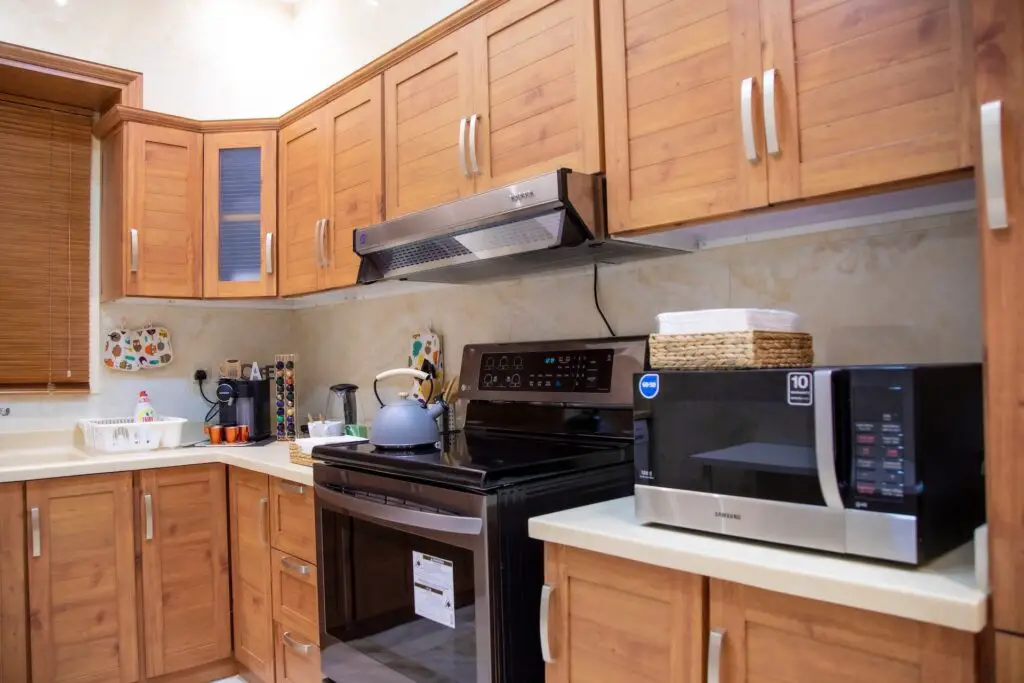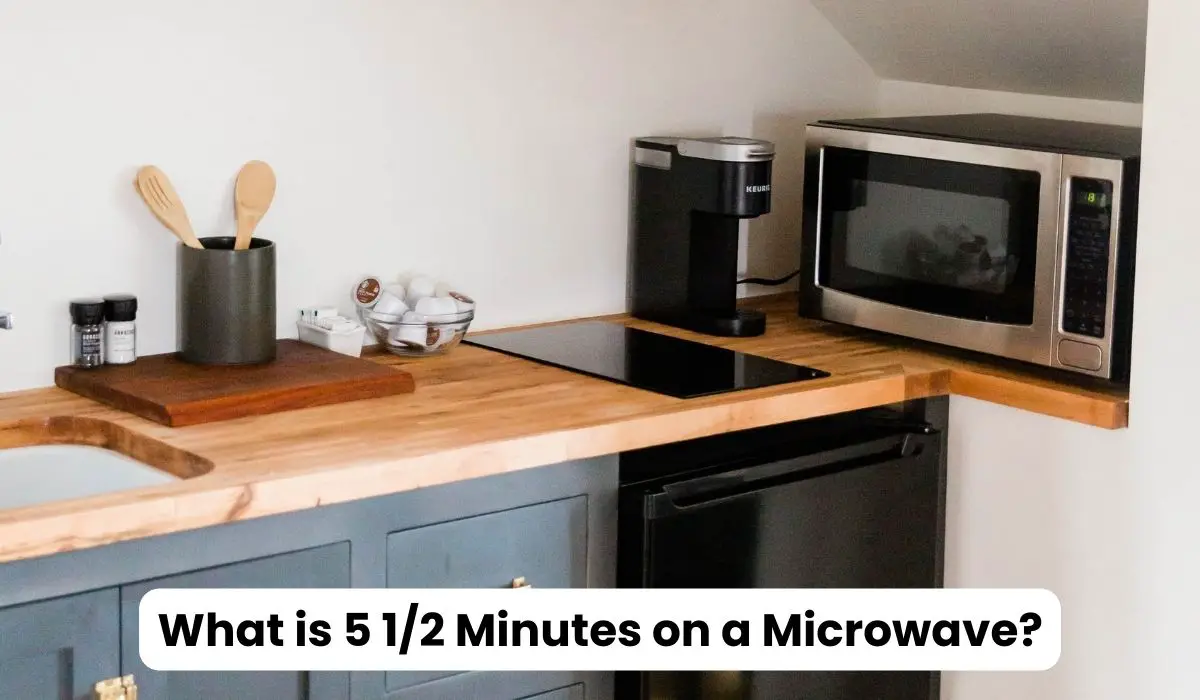Microwaves have come a long way since their inception. Initially developed for military use, these devices quickly entered civilian households. Advancements in technology have not only made microwaves more accessible but also enhanced their functionality. Today, we have intelligent microwaves with unimaginable features.
Microwave ovens have become an indispensable part of our kitchens, revolutionizing how we cook and consume food. In this fast-paced world, where time is of the essence, the microwave has emerged as a time-saving hero, allowing us to prepare meals swiftly. One intriguing aspect of microwave cooking is the commonly mentioned time frame of 5 1/2 minutes. In this article, we’ll delve into the significance of this specific duration, exploring its roots, practical applications, and the broader context of microwave cooking.
Before we explore the magic of 5 1/2 minutes, it’s crucial to understand microwave power levels. These levels determine the intensity of the microwave radiation and, subsequently, the cooking time. Adjusting the power levels can significantly impact the outcome of your culinary endeavours.
Table of Contents
What is 5 1/2 Minutes on a Microwave?

Beyond the mere numerical value of five minutes and thirty seconds, 5 1/2 minutes in a microwave holds no mystique or complexity. There’s no hidden magic or secret manoeuvring involved. In essence, it’s a straightforward task.
When faced with the need to microwave something for precisely 5 1/2 minutes, there’s no need for any intricate calculations or elaborate strategies. The solution is as simple as setting your timer to 5 minutes and 30 seconds. Heating your dish perfectly is now as easy as following a simple process without any extra bells or whistles.
In microwave cooking, where time is of the essence, 5 1/2 minutes is a reliable and easily attainable interval. So, the next time your culinary endeavours require this specific duration, rest assured that it’s a no-nonsense affair – just set the timer and let the microwave do its job.
How Long is a Microwave Minute?

In temporal consistency, a minute is a minute, whether it’s spent waiting for your popcorn to pop in the microwave or simply glancing at the clock on the wall. Universally, one minute consists of 60 seconds—unchanged and unwavering.
Yet, if we delve into the intricacies of microwave operation, a more nuanced reality emerges. Technically speaking, a microwave minute is not precisely 60 seconds. It’s swifter, clocking in at approximately 58 seconds.
Before you start feeling like time is playing tricks on you, let’s uncover the science behind this seemingly unconventional duration. Those missing 2 seconds aren’t lost in a temporal abyss; instead, they are dedicated to a crucial process within the microwave.
As your microwave goes to work, the magnetron filament takes about 2 seconds to reach the necessary temperature. This filament must get hot enough to initiate the electron-boiling process, a pivotal step in generating the microwaves that are responsible for heating up your delectable leftovers.
So, the next time you ponder the enigma of a microwave minute, rest assured that it adheres to the universal ticking of seconds. However, within the confines of your microwave, a fascinating dance of electrons and magnetrons trims those 60 seconds just a tad, ensuring your food is warmed to perfection. To learn more about the intricacies of timing in microwaves, delve into the article on 1 1/2 minutes on a microwave.
How Should You Use A Microwave Timer?
Setting the timer on your microwave might seem like a small task, but it is crucial to ensure your food is cooked or reheated to perfection. Let’s break down the simple steps to master using a microwave timer effectively.
1. Locate the Timer Set/Off Button
The timer function on your microwave is independent of its cooking capabilities. To initiate the timer, locate the Timer Set/Off Button. Press it, and the Timer icon will promptly appear on the display.
2. Enter the Desired Time
Once you’ve consulted your recipe and determined the exact time needed for your culinary masterpiece, it’s time to input it into the microwave. When the display prompts you with “Enter Time in Min and Sec,” use the numeric keypad to punch in the required minutes and seconds. This step ensures precision in your cooking or reheating process.
3. Start the Timer
With the correct time set, the next step is to set the timer in motion. You could do this by pushing the “start” button or the Timer Set/Off button again. Your microwave will now diligently count down the seconds and minutes, allowing you the freedom to focus on other kitchen tasks.
4. Pay Attention to the End Signal
As your timer counts down, keep an eye on the display. When the set time elapses, the word “End” flashes on the screen. However, if you multitask and miss this visual cue, fear not. Most microwaves have an audible signal—a friendly beep or tone—that alerts you when your culinary creation is ready.
Mastering the microwave timer is as simple as that. Following these four straightforward steps ensures that your food is cooked or reheated to perfection, giving you more time to savor your delicious creation.
What is the Difference between Microwave Time and Oven Time?

Have you ever wondered about the time disparity between a microwave and an oven when cooking? While both appliances share the goal of transforming frozen delights into delectable meals, the time required to achieve this varies significantly.
In a culinary face-off, microwave ovens emerge as the speed champions, boasting up to 75% faster cooking time than their conventional oven counterparts. It means that a microwave can whip up a meal in just a quarter of the time it takes for a regular oven to do the same job.
In perspective, if your oven recipe dictates a cooking time of 20 minutes, a microwave would only need 5 minutes to achieve a similar result. You read that right: a mere quarter of the oven’s cooking duration.
Conversely, the equation is straightforward if you want to translate microwave time into oven time. Multiply the given microwave time by 4. For example, if a microwave recipe instructs you to cook something for 4 minutes, doing the math (4 multiplied by 4) reveals that your oven would need 16 minutes to achieve equivalent results.
Understanding this time conversion allows you to seamlessly switch between the two appliances based on your needs and preferences. So, whether you’re in the mood for a quick microwave fix or a slow, oven-baked delight, being mindful of the time factor ensures that your culinary endeavors turn out just right.
What is 100 Seconds on a Microwave?

When you punch in ‘100’ on your microwave keypad, you’re not initiating a cryptic culinary ritual; instead, you’re setting the timer for precisely 1 minute and 40 seconds. It’s a numerical translation that seems unconventional at first glance, but it’s the microwave’s way of ensuring your food is heated to perfection.
You see, microwaves are designed to operate in a world of seconds and minutes, much like the rest of our daily lives. However, the keypad interface sometimes adopts its time shorthand. When you input ‘100,’ you’re telling your microwave to diligently work its magic for 100 seconds.
Breaking it down, that’s 60 seconds for the initial minute and an additional 40 seconds to round out the count. It’s a quirk of microwave language that might raise an eyebrow, but rest assured, it’s a straightforward way of ensuring your culinary creations emerge from the microwave at just the right temperature.
So, the next time you aim for a minute and 40 seconds of microwave precision, dial in ‘100,’ sit back and let the microwave clock tick down, knowing that your delicious dish is on its way to perfection. For those curious about the significance of 3 1/2 minutes in a microwave, check out our article on how long Is 3 1/2 minutes in a microwave.
Why Do Microwave Ovens Cook Fast?

Unlocking the mystery behind the swift culinary prowess of microwave ovens reveals a fascinating interplay of science and technology. These kitchen marvels have a knack for cooking food faster than their traditional oven counterparts, and here’s why.
At the heart of a microwave oven’s speed lies the utilization of invisible electromagnetic waves called microwaves. Picture these waves as energetic messengers hurtling through space at the astonishing speed of light—about 300,000 kilometres per second.
The magic begins with a magnetron device, which taps into electrical energy from a power outlet and directs it to a heated filament. This creates a cascade of electrons, generating microwaves propelled into the food compartment through an antenna.
Once inside, the microwaves embark on a journey of bouncing back and forth, weaving around the food. To ensure a symphony of even heat distribution, the food typically rests on a revolving glass turntable, executing a slow rotation dance.
Now, here’s where the microwave’s efficiency shines. The microwaves don’t merely linger on the surface; they dive into the heart of your meal. As they traverse the food, they induce rapid vibrations within the molecules.
These vibrating molecules, in scientific terms, mean heat. The faster the molecules jiggle and jive, the hotter your food becomes. It’s a direct and efficient transfer of heat energy into the tiny molecular realms inside your dish.
The speed advantage of microwaves becomes evident when compared to their counterparts. Unlike other cooking appliances that initiate the heating process on the surface and gradually work their way to the centre, microwaves penetrate both the inside and outside of the food. This dual assault on the temperature equilibrium makes microwaves the sprinters of the kitchen, swiftly turning your raw ingredients into delectable delights.
Adding to their rapid-fire approach, microwave ovens eliminate the need for preheating. They kick into action immediately, sparing you the wait associated with appliances that demand a warm-up period.
In essence, the efficiency of microwaves lies in their ability to channel heat energy directly into the heart of your culinary creations, ensuring a speedy and even cooking experience that transforms raw ingredients into piping-hot perfection in no time.
Conclusion:
In the world of microwave marvels, 5 1/2 minutes emerges as the unsung hero, silently transforming raw ingredients into culinary masterpieces. From gourmet vegetables to express pasta and delightful mug cakes, this timeframe encapsulates efficiency without compromising on flavor or texture. Embrace the precision, unlock the secrets, and maximize your microwave experience to elevate your culinary journey.
FAQs
Can I microwave any food for 5 1/2 minutes?
Absolutely! However, some delicate dishes may require adjustments. Refer to our recipe section for tailored recommendations.
How does microwaving for 5 1/2 minutes impact nutrient retention?
Microwaving for 5 1/2 minutes generally preserves more nutrients than traditional cooking methods, thanks to the shorter cooking time.
Are there safety concerns with microwaving for this duration?
No significant safety concerns arise from microwaving for 5 1/2 minutes. Always follow recommended guidelines for specific dishes.
Can I use any dish for microwaving?
Most microwave-safe dishes are suitable but avoid metal containers. Check our safety guide for optimal choices.



